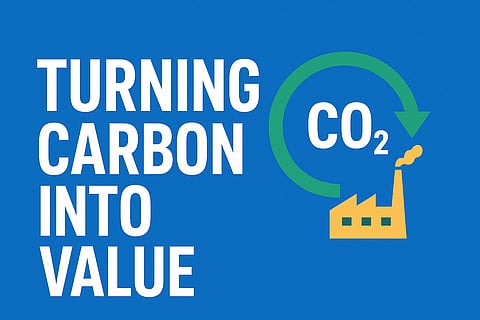Turning Carbon into Value: WEF Report Maps Pathways for Growth and Emissions Abatement
A new World Economic Forum (WEF) report, Defossilising Industry: Considerations for Scaling-up Carbon Capture and Utilisation Pathways, spotlights how CCU technologies can convert captured CO₂ into fuels, chemicals, and building materials — creating value while driving industrial decarbonisation.
Yet, global CCU projects planned to date cover just 6% of what’s required by 2040 to align with climate goals, signaling a huge gap between ambition and action.
The Untapped Potential of CCU
Currently, most CCU activity is concentrated in fuels, representing nearly 11.5 Mtpa of CO₂ utilization capacity by 2030. Experts warn that focusing too heavily on fuels could limit broader impact; diversifying into chemicals and building materials will be vital to realize CCU’s full potential.
“Scaling CCU could turn CO₂ from a liability into an asset,” said Fernando Gómez, Head of the Future of Materials at WEF. “With credible policy signals and long-term investment, CCU can unlock new markets and accelerate decarbonization.”
Bridging the Gaps: Policy, Finance & Collaboration
The report — developed with Wood Mackenzie and 30+ global industry experts — outlines three essential actions to move CCU from pilot scale to commercial viability:
Technology-neutral incentives to reward both permanent and short-term carbon abatement solutions.
Long-term and blended financing to bridge early-stage investment gaps.
Cross-industry partnerships to aggregate demand and drive market adoption.
Without these enablers, warns Simon Flowers, Chairman and Chief Analyst at Wood Mackenzie, “CCU will remain a missed opportunity.”
Innovation Leading the Way
The WEF report also celebrates innovators from the UpLink CCU Challenge, whose technologies — from electrochemical CO₂ conversion to mineralization for construction materials — demonstrate the innovation pipeline emerging in this field.
However, these start-ups need policy support and industrial offtake commitments to scale up.
A Spotlight at SDI Meetings 2025
The findings will shape discussions at the World Economic Forum Sustainable Development Impact Meetings 2025 (22–26 September, New York), where leaders from business, government, and civil society will explore how to transform captured carbon into competitive advantage — paving the way for a future where emissions equal opportunity.


